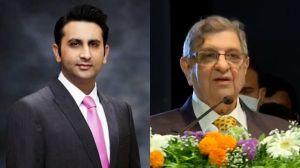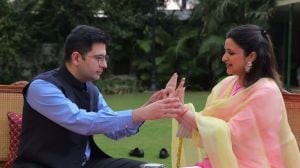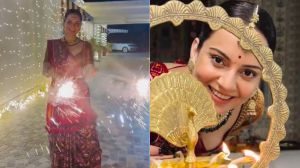The 16th edition of the Rajasthan International Folk Festival (RIFF) in Jodhpur, popularly known as Jodhpur RIFF, is shining a distinct spotlight on dance. Otherwise known for the spectacular concerts and events held in and around the majestic Mehrangarh Fort, Jodhpur RIFF is putting a focus on dance like never before, says festival director Divya Bhatia.
“We are breaking the distinction between what is thought of as traditional and contemporary,” he adds.
While the musicians of Rajasthan’s Langa and Manganiar communities took centre stage, dancer Tarini Tripathi blurred the lines between classical and folk as she performed Kathak to Rajasthani tunes on Friday. For this, she collaborated with SAZ, a band comprising three young Rajasthani folk musicians. “Unique musical compositions of the Langa community juxtaposed with classic Kathak nuances were the threads that strung the collaboration,” says Tripathi, adding that this was the first time that she “truly” dived into the art of the Langas, a community of musicians from western Rajasthan.
“Their art prides itself on its traditional compositions and oral tradition, as does Kathak,” she says, commenting on the confluence of Kathak and Rajasthani folk music, which, although distinct, bear some commonalities such as story-telling, themes and the guru-shishya parampara.
As the curtain fell on Tripathi’s performance, Indian-British dancer Raina Peterson mesmerised the audience. Peterson presented the myth of Narasimha, an avatar of Lord Vishnu, and employed their training in Mohiniyattam to create an experimental dance work responding to a poem by the mediaeval Tamil poet-saint Andal.
“I love Andal’s work for the intensity of her feelings, the striking imagery and the sensuality which permeate her poetry,” says Peterson. For the performance, Peterson collaborated with Marco Cher-Gibard, who played the prepared guitar, “a fascinating and slightly chaotic instrument which perfectly captures the beauty and intensity of Andal’s poem”.
What is striking in both the story of Narasimha and Peterson’s performance is the exploration of the liminal, the in-between.
For the dancer, these liminal spaces are exciting. “I think, there is a lot of power there, anything can happen, including the power and potential to disrupt and subvert the status quo, like in the story of Narasimha. I also see myself as in-between, for example, in my gender expression as a non-binary person and in my identity as a person of mixed Indian and English heritage. I love how Andal’s poem is deeply sensual, but with a hint of violence woven through the beauty—it too is in-between. And in Narasimha, I explored this interesting space—in between sensuality and violence,” explains Peterson.
As the dancers explored these spaces, dance and music themselves appeared to blend—paving the way for a space, where just the present, being in the moment, mattered.
And rightly so, as the idea was to bring forth the idea of the dance as a valid expression of the arts, along with music. “Traditionally, in India, we have had the concept of sangeet natak, which made no distinction between music, dance and theatre. And since we are exploring root traditions, presenting them in collaboration with other music forms, there was no reason why the musicians shouldn’t have collaborated with other art forms,” says Bhatia.
Apart from her performance, Tripathi also conducted a dance boot camp, where one got an insight into the world of Kathak. Here, the intent was not only to know the fundamental Kathak movements but also to look at the history and culture of this art form. “It was a quick teaser into this age-old tradition,” she comments.









